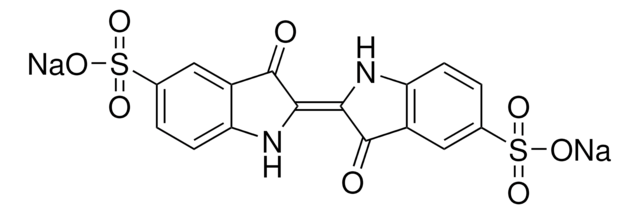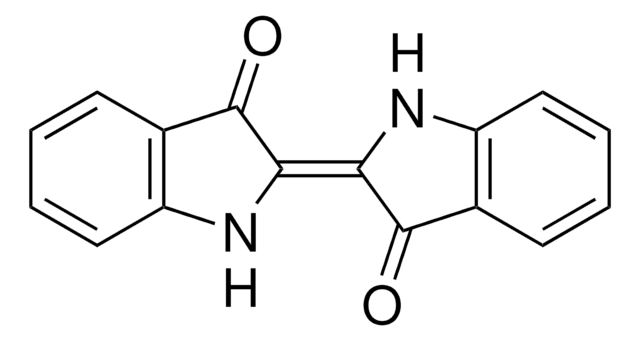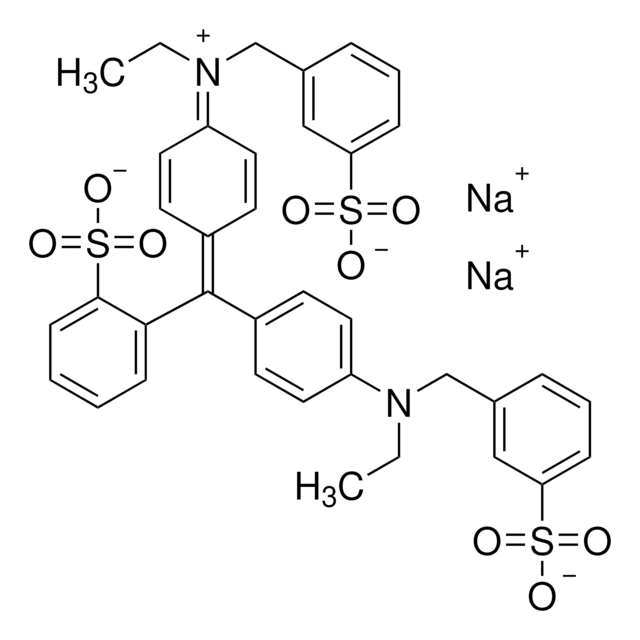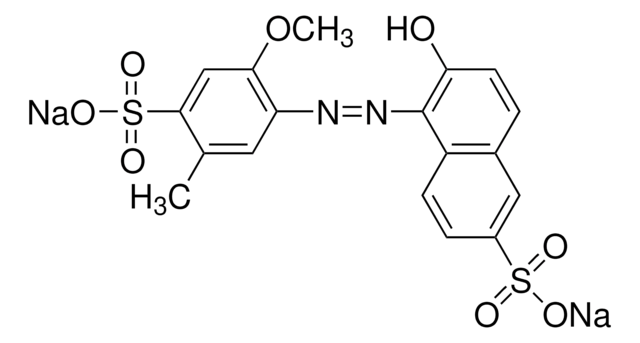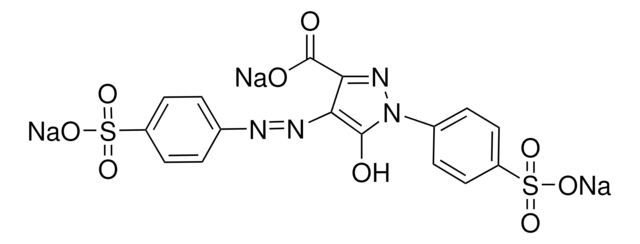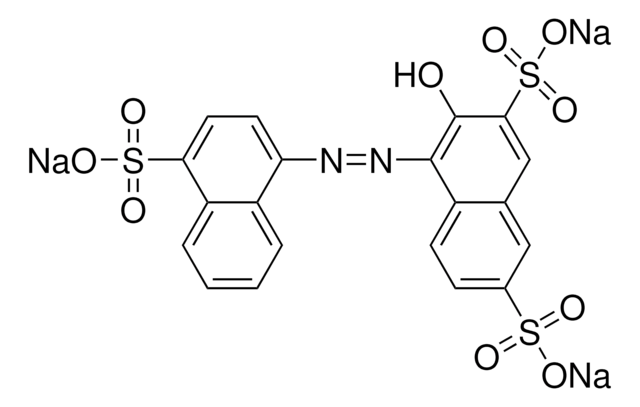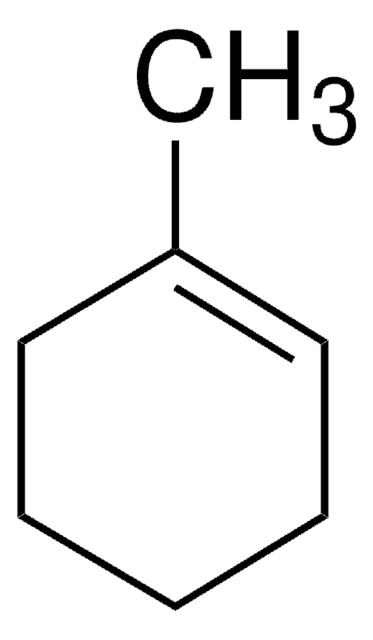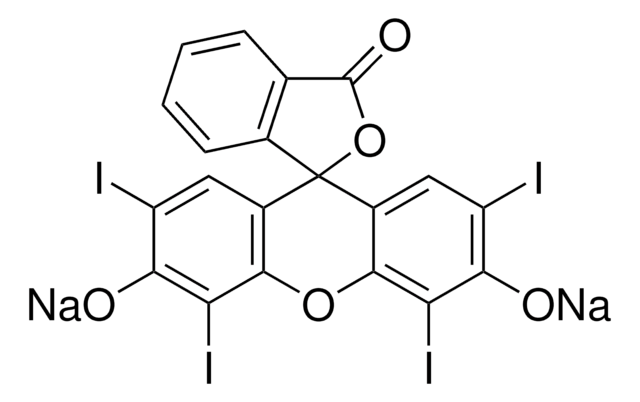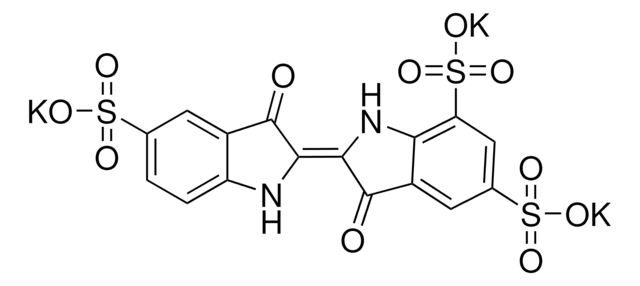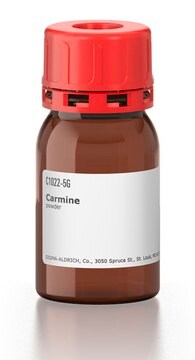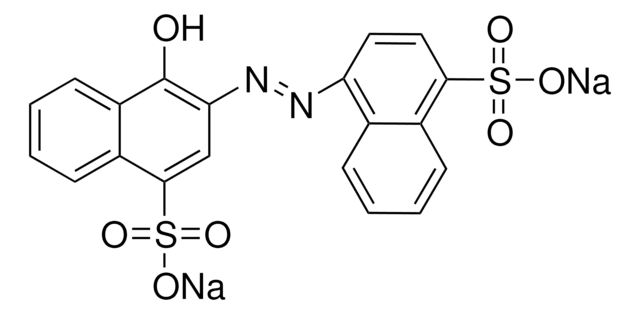131164
Indigo carmine
certified by the Biological Stain Commission, Dye content 85 %
Synonyme(s) :
Acid Blue 74, Indigo-5,5′-disulfonic acid disodium salt, Indigocarmine
About This Item
Produits recommandés
Qualité
certified by the Biological Stain Commission
Niveau de qualité
Essai
>85.0% (HPLC)
Forme
solid
Composition
Dye content, 85%
Couleur
dark blue to very dark blue
pH
3.87 (30 °C, 7.14 g/L)
Pf
≥340 °C
Densité
0.71 g/cm3 at 29 °C
λmax
608 nm
εmax
20,000 at 250-256 nm in water at 0.01 g/L
29500 at 284-290 nm in water at 0.01 g/L
Application(s)
diagnostic assay manufacturing
hematology
histology
Température de stockage
room temp
Chaîne SMILES
[Na+].[Na+].[O-]S(=O)(=O)c1ccc2NC(\C(=O)c2c1)=C3\Nc4ccc(cc4C3=O)S([O-])(=O)=O
InChI
1S/C16H10N2O8S2.2Na/c19-15-9-5-7(27(21,22)23)1-3-11(9)17-13(15)14-16(20)10-6-8(28(24,25)26)2-4-12(10)18-14;;/h1-6,17-18H,(H,21,22,23)(H,24,25,26);;/q;2*+1/p-2/b14-13+;;
Clé InChI
KHLVKKOJDHCJMG-QDBORUFSSA-L
Vous recherchez des produits similaires ? Visite Guide de comparaison des produits
Application
Actions biochimiques/physiologiques
Adéquation
Mention d'avertissement
Warning
Mentions de danger
Conseils de prudence
Classification des risques
Skin Sens. 1
Code de la classe de stockage
11 - Combustible Solids
Classe de danger pour l'eau (WGK)
WGK 1
Équipement de protection individuelle
dust mask type N95 (US), Eyeshields, Gloves
Faites votre choix parmi les versions les plus récentes :
Déjà en possession de ce produit ?
Retrouvez la documentation relative aux produits que vous avez récemment achetés dans la Bibliothèque de documents.
Les clients ont également consulté
Protocoles
Separation of Tartrazine; Amaranth; Indigo carmine; New Coccine; Sunset Yellow FCF; Allura Red AC; Fast Green FCF; Erioglaucine disodium salt; Erythrosin B sodium salt; Phloxine B; Rose bengal
Notre équipe de scientifiques dispose d'une expérience dans tous les secteurs de la recherche, notamment en sciences de la vie, science des matériaux, synthèse chimique, chromatographie, analyse et dans de nombreux autres domaines..
Contacter notre Service technique